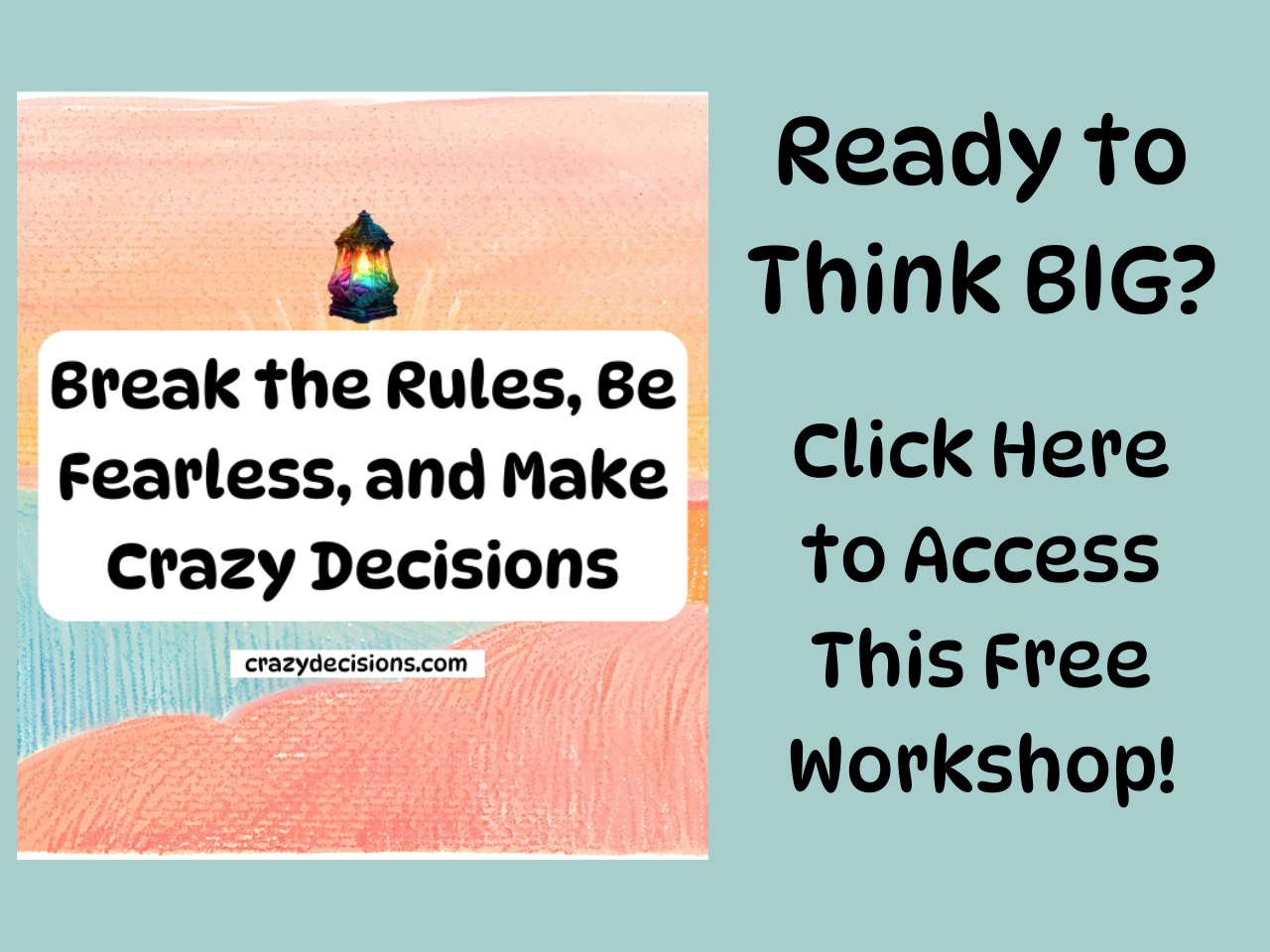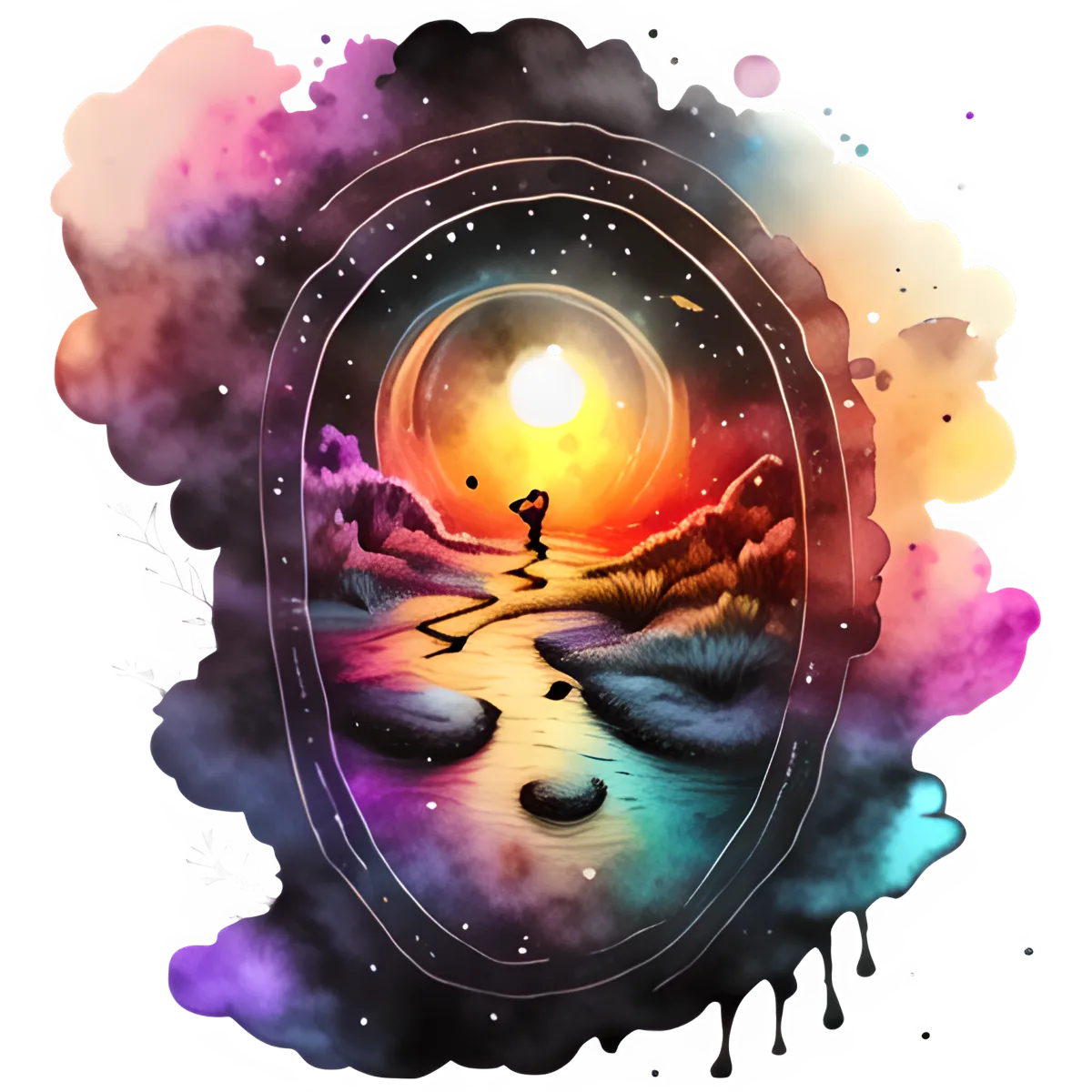
How to Transform Chaos Into Creativity Without Losing Your Mind
Life can feel like a whirlwind.
Deadlines, decisions, and everything in between. It’s enough to make your head spin.
Oddly enough, that chaos you’re drowning in? It can also be the secret sauce to your most inspired ideas.
Yep, there’s a way to own the mess and spin it into gold. And no, it doesn’t involve losing your cool or pretending the chaos doesn’t exist.
You just need the right mindset, and a little strategy to make it happen.
Table of Contents
Mindfulness Techniques to Manage Chaos
Breathing Exercises: Calm the Mind, Unlock Creativity
Meditation Practices: Find Clarity in the Chaos
Creating a Structured Environment
Unleashing Creative Potential Amidst Chaos
Understanding Chaos
Chaos isn’t just about messy desks or missed deadlines, it’s the noise that disrupts your focus, inside and out.
It could be that constant swirl of ideas in your head or external challenges like unexpected client demands.
To make sense of it, you have to take a closer look at what kind of chaos you’re dealing with because not all chaos is created equal.
Types of Chaos
Chaos comes in two flavors: internal and external. Both can throw you off your game, but they play out in very different ways.
Internal Chaos: Ever feel like your brain is a crowded room with everyone shouting at once? That’s internal chaos. It’s the overthinking, self-doubt, or obsessive perfectionism that makes you second-guess every decision. Think about when you’re brainstorming a product launch and can’t stop criticizing your own ideas before they even take shape. Yeah, that.
External Chaos: This is the chaos that comes from the world around you. Deadlines, technical hiccups, or dealing with a sudden shift in market trends all fall into this bucket. Picture this: Your website’s traffic is booming one day, but then a platform update completely tanks your analytics, leaving you stuck trying to piece it all together.
Recognizing the type of chaos you’re up against helps you figure out what’s within your control and, more importantly, what isn’t.
Impact of Chaos on Creativity
Here’s the thing about chaos: it can either be your worst enemy or your greatest ally.
Sounds counterintuitive, right?
When Chaos Hurts Creativity:
It’s hard to think clearly when you’re overwhelmed. Your ideas feel half-baked because you’re too busy firefighting.
Constant distractions keep pulling you away from deep work. Got Slack notifications pinging every two minutes? Exactly.
When Chaos Fuels Creativity:
On the flip side, chaos can also be a catalyst. Ever notice how some of your best ideas come when your mind feels like a hot mess? That’s because chaos shakes things up, pushing you out of your comfort zone.
Unpredictability often forces you to think outside the box. Problems demand creative solutions, like finally rethinking that outdated email funnel because a piece of your tech stack broke.
Chaos keeps your mind moving. While it’s exhausting, it’s also fertile ground for unexpected ideas.
The trick? Learn to ride the wave without letting it pull you under.

Mindfulness Techniques to Manage Chaos
You’re knee-deep in chaos, barely holding onto your coffee cup, much less your sanity.
When life feels overwhelming, mindfulness can be like hitting the pause button on the madness.
And no, you don’t need incense or a meditation cushion to make it work. You just need a few practical tools that fit into your day.
Breathing Exercises: Calm the Mind, Unlock Creativity
It’s wild how something as basic as breathing can flip the script on your chaotic moments. But when done intentionally, it’s incredibly helpful for your focus and flow. Let’s talk about a couple of techniques you can use, starting today:
Box Breathing: Inhale for 4 counts, hold for 4, exhale for 4, hold for 4—repeat. It’s simple geometry for your lungs. This technique helps slow your heart rate and clear mental fog. Feeling scatterbrained before tackling a big project? Start here.
Alternate Nostril Breathing: Yes, it feels funny at first, but stick with me. Use your thumb to close your right nostril, breathe in through your left. Then, close your left nostril, and exhale through your right. Repeat this cycle for a couple of minutes. It’s oddly soothing and excellent for balancing your thoughts. Perfect for those OMG-I-can’t-deal moments.
4-7-8 Breathing: Breathe in through your nose for 4 counts, hold for 7, exhale through your mouth for 8 counts. It’s like hitting the “reset” button on your brain. Use this when you need a quick calm-down before diving into creative work.
Each exercise only takes a couple of minutes.
Try them out, and notice how your brain shifts gears from panic mode to productivity.
Meditation Practices: Find Clarity in the Chaos
Meditation isn’t about sitting cross-legged on a mountaintop. It’s about creating space in your brain to breathe, to let the chaos settle like stirring a cup of coffee and waiting for the whirlpool to calm.
Here are a few beginner-friendly practices to get started:
Guided Meditations: Not sure how to begin? Apps like Calm or Insight Timer offer guided sessions that walk you through the process. Think of it as meditation “training wheels.” Carve out ten minutes, pop in your earbuds, and let someone else guide the way.
Visualization Meditation: Close your eyes and picture a calm, inspiring scene. Maybe it’s a forest, a beach, or even an ideal workspace. Imagine every detail, the sounds, smells, and textures. When chaos takes over, this practice anchors you in serenity and boosts creative thinking.
Body Scans: Start at the crown of your head and move down, consciously relaxing each part of your body. This technique is super grounding and great for when you’re feeling overwhelmed by decision fatigue.
Mindfulness isn’t woo-woo nonsense; it’s practical, powerful, and science-backed.
With a little practice, you’ll have these chaos-taming tools in your back pocket, ready whenever you need them.

Creating a Structured Environment
When chaos reigns, structure becomes your best friend.
It’s not about micromanaging every aspect of your day. It’s about creating clear boundaries and systems that free your mind for creativity.
If your workspace or routine feels like quicksand, you’re always going to struggle to build something solid.
Decluttering Your Space
Look around.
Is your desk a cluttered mess of coffee mugs, sticky notes, and random cables? No judgment, we’ve all been there.
A cluttered space often leads to a cluttered mind.
If you're trying to spark creativity in the middle of a tornado, good luck.
Here’s how you can clear the storm and set the stage for better brainstorming:
Start Small: Don’t overhaul everything at once. Begin with one drawer or a single surface. Win those small victories.
Sort Into Categories: Use the classic "Keep, Toss, Donate" system. If you haven’t used something in months, it’s likely not essential.
Use Storage Solutions: Invest in simple but effective tools like bins, shelves, or desk organizers to keep your environment tidy.
Minimalism Matters: Less isn’t just more, it’s breathability. Keep only what adds utility or sparks joy.
An organized space means fewer distractions and fewer distractions mean a smoother path to those “Eureka!” moments.
Establishing Routines
You ever notice how athletes have pre-game rituals? That’s because routines ground you.
They eliminate the mental load of decision-making and set you up to perform at your best. If creative chaos feels like quicksand, the routine is your rope ladder out.
Morning Rituals: Start your day consistently. Whether it’s journaling, coffee, or a quick workout, let this ritual energize you and set the tone.
Time Blocking: Dedicate specific hours to deep work, brainstorming, or execution. This keeps your day from feeling like a pinball machine.
Mindful Breaks: Don’t overdo it. Regular, intentional pauses, like a quick walk or stretching can recharge your creative muscle.
Learners thrive on structure, but you don’t have to turn into a robot.
Keep it flexible yet deliberate. Routine builds the runway for your creative flight, just be sure it doesn’t become a cage.

Unleashing Creative Potential Amidst Chaos
Creativity isn’t some magical light bulb moment that only strikes during peace and quiet.
Sometimes, life feels like a tornado, yet that’s when some of your best ideas can emerge.
It’s all about finding focus within the frenzy and channeling that energy into meaningful, actionable creativity.
Setting Creative Goals
When everything feels like a juggling act, setting clear creative goals is like anchoring yourself amid the storm.
Why wander around aimlessly when a roadmap could lead you straight to brilliance? Specific goals give purpose to your creative efforts, no matter how chaotic things get.
Think of it this way: without a goal, your creativity is like a loose garden hose, spraying water everywhere without watering anything that matters. But with focused intent, you can direct that flow to nourish something amazing.
Start with these steps:
Break It Down: Instead of one big, overwhelming goal, split it into smaller chunks. Want to redesign your website? Tackle one page at a time.
Make It Specific: “Get more clients” is too vague. Instead, try, “Connect with three clients from LinkedIn this month.”
Set Deadlines: Open-ended goals invite procrastination. Deadlines give you momentum.
Measure Success: How will you know you’ve succeeded? Decide on indicators—likes, sales, or even just finishing the task.
When chaos feels like it’s steering your ship, these small and clear goals act like your rudder. You’re not just reacting to the storm; you’re navigating through it with purpose.
Collaborative Brainstorming
Controlled chaos in a brainstorming session can be the secret sauce to creative breakthroughs.
Here’s how to make it work:
Start With Structure: Sure, brainstorming thrives on creativity, but some rules help. Set a time limit or define a specific focus. For instance, “How can we improve our on-boarding process?”
Capture Everything: Scribble down even the wild ideas. That “off-the-wall” thought from Sheila? It might spark the winning concept later.
Use Visual Aids: Post-its or whiteboards can make all the difference. Seeing ideas visually laid out reduces overwhelm and encourages connections.
Encourage Wild Ideas: No judgments, no “that won’t work.” Sometimes, chaos needs a mix of the bizarre and the practical to ignite genius.
Break Into Groups: Chaos breeds in big meetings. Divide into smaller clusters, tackle specific angles, and then bring everything together.
Chaos in brainstorming isn’t the enemy; disorganization is. Allow the energy to flow, but channel it through methods that capture brilliance without losing your grip.
The Role of Flexibility and Adaptability
Chaos isn’t something you tame, it’s something you learn to dance with. And the key to moving in step with uncertainty lies in how flexible and adaptable you are.
These skills aren’t just nice-to-haves; they’re essentials for every digital entrepreneur who’s trying to turn upheaval into ingenuity.
Whether it’s shifting strategies on the fly or learning from a colossal mistake, flexibility and adaptability are what keep you grounded in the storm.
Embracing Change
Change is like an unexpected house guest. It can be awkward and inconvenient, but it often brings something valuable to the table. The quicker you welcome it, the less disruptive it will feel.
So how do you shift your mindset to lean into uncertainty instead of bracing against it?
Focus on Possibilities: Instead of viewing change as a threat, look at it as an opportunity. What’s an area you’ve been neglecting? A sudden shift might be pushing you toward it.
Keep a Beginner's Mindset: Approach challenges with curiosity rather than dread. Act like you're learning to ride a bike: wobbly at first, but with the promise of new paths ahead.
Normalize the Pivot: Accept that plans will change, it’s part of the game. The ability to pivot your strategy quickly is often the difference between failure and success.
Stay Open to Feedback: Be the person who listens when your team or clients have new ideas. Sometimes, the perspective you need is sitting right next to you.
When you stop fighting uncertainty, you free up the energy to get creative. You might even find that chaos is just the shake-up you needed to think differently.
Learning from Failure
Failure. Does the word make you wince?
It’s okay if it does, no one loves to mess up.
Each blunder is a building block for something better.
Some of the best creative breakthroughs come after falling flat on your face.
Why? Because failure:
Reveals Weaknesses: You can’t fix what you don’t acknowledge. Missteps often highlight areas ripe for innovation.
Forces Resourcefulness: No one gets more creative than a person with limited options. Constraints bring clarity.
Shifts Perspectives: A detour can help you see paths you’d ignored. That “wrong” turn might just lead to brilliance.
Improves Resilience: Yes, it’s embarrassing to flop, but each recovery makes you tougher and more prepared for the next challenge.
Next time something crumbles, sit with it.
What went wrong? What could you do differently?
Flexibility and adaptability aren’t about avoiding chaos. They’re about finding your groove within it, even when things go sideways.
Wrap Up
Chaos might feel overwhelming at first, but when harnessed, it becomes the perfect storm for creativity.
The strategies we’ve discussed, mindfulness, structure, adaptability are tools to not only survive the storm but thrive in it.
Whether you're dealing with chaotic thoughts or external disruptions, remember that you're not stuck. You have choices.
Taking action is the next step. Choose one strategy that resonated with you from this article.
Start small, but stay consistent. Maybe it’s trying out box breathing when your mind starts spinning, or dedicating 15 minutes daily to decluttering your workspace. It’s these little practices that lead to big shifts over time.
Creativity thrives when you apply it. Pick a chaos-filled challenge you're facing right now and use one of the tools shared here to tackle it. Write it down, commit to it.
Chaos doesn't have to throw you off your game. It can be the very catalyst for the breakthrough you’ve been waiting for.
Actions speak louder than ideas, so put these strategies to work and see how chaos transforms into creativity for you.
Let this be your reminder that you're capable of steering through the storm, one step at a time.
Ready to convert your mess into magic? It starts here.
Needing some CRAZY in your life? Join the club!
👇

© 2024 Crazy Decisions | All Rights Reserved Worldwide
Crank up the Crazy, Dial Down the Doubt

